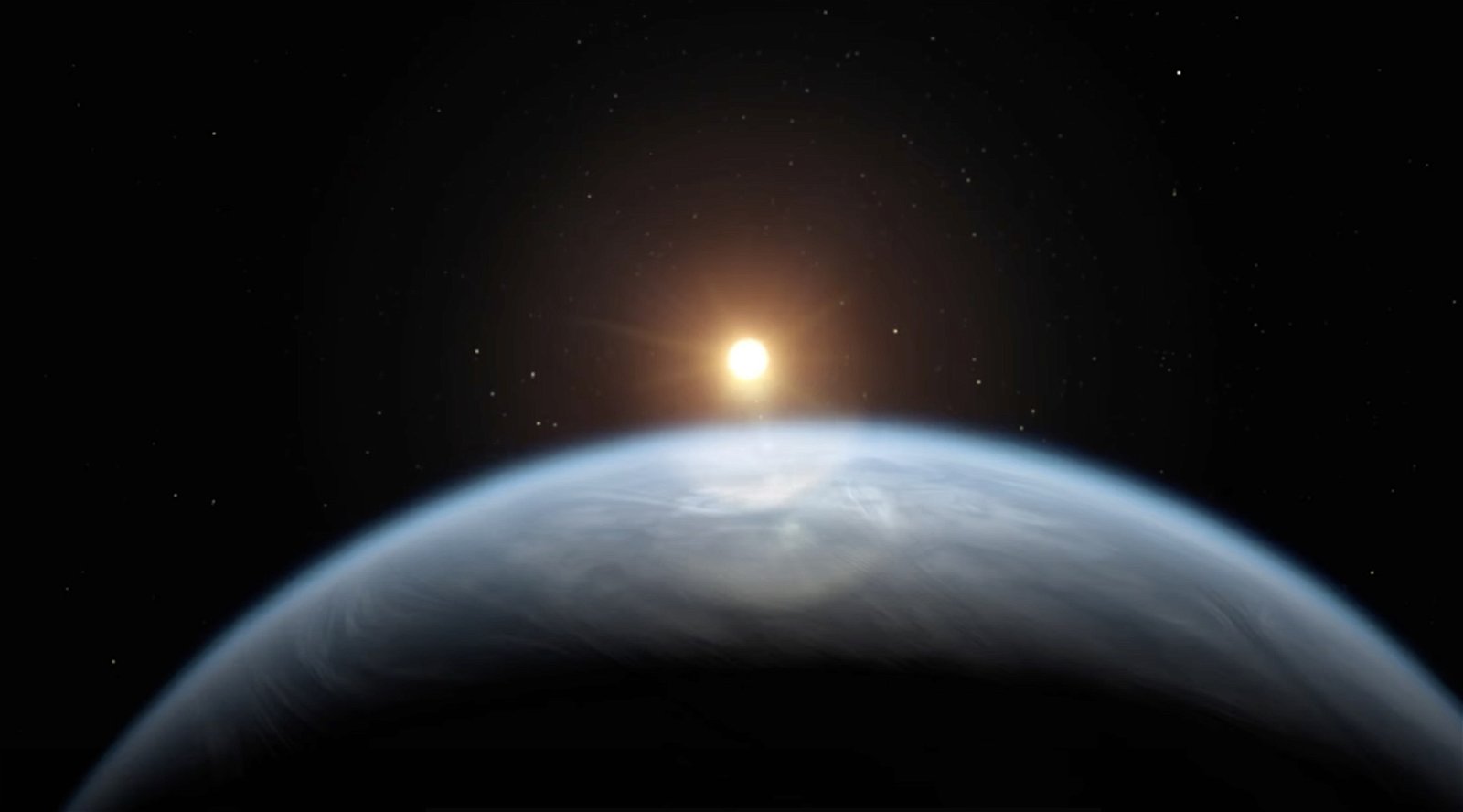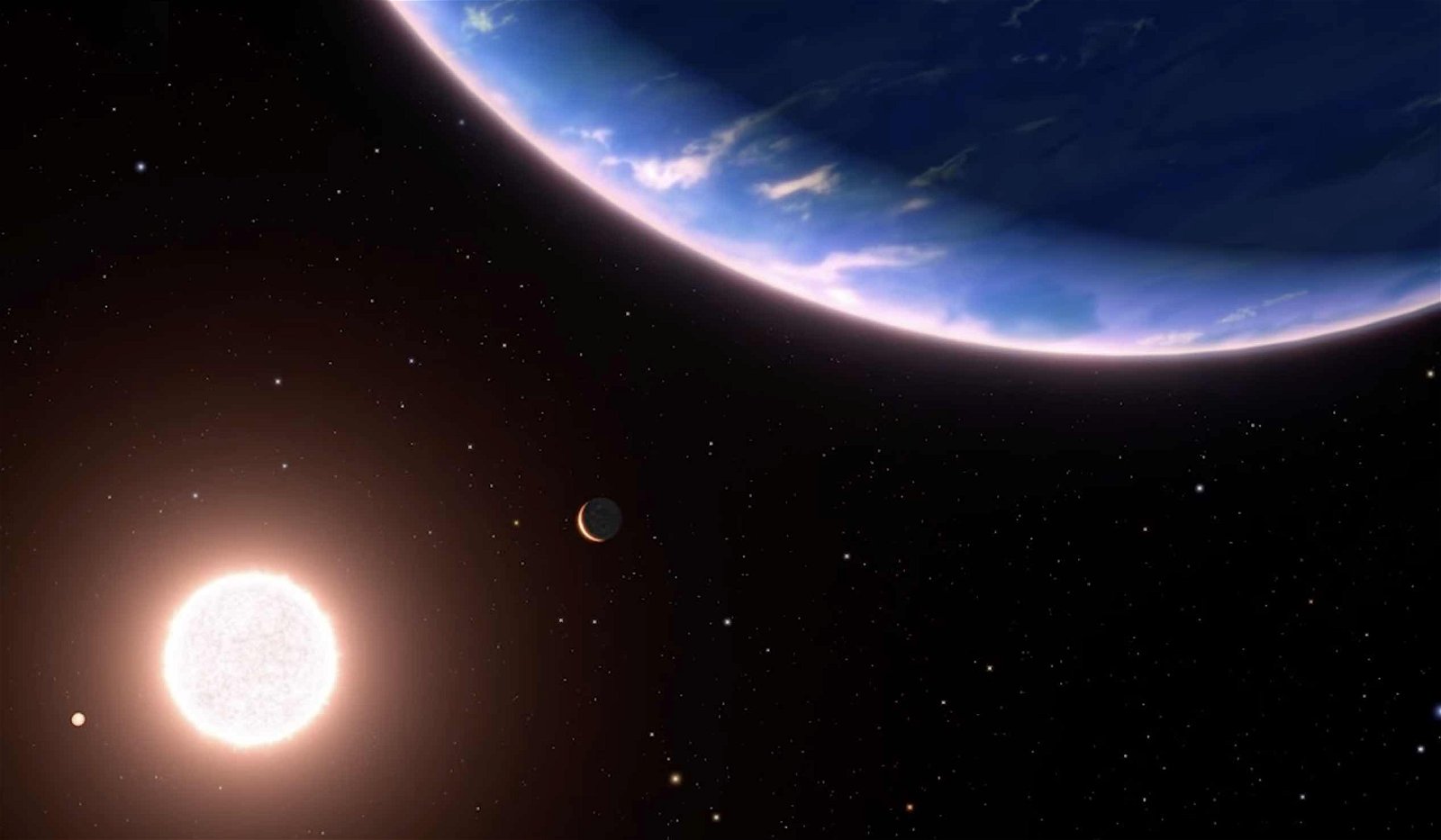NASA’s Hubble Space Telescope has detected the presence of water in the atmosphere of a distant exoplanet, which astronomers say is the smallest planet of its kind to reveal such a discovery.
The planet, GJ 9827D, was initially found in 2017 by NASA’s Kepler Space Telescope. Roughly twice the diameter of Earth and located approximately 97 light years away, the tiny exoplanet completes an orbit around its nearest star, a red dwarf, in a little more than six Earth days.
Laura Kreidberg with the Max Planck Institute for Astronomy in Heidelberg, Germany, called the discovery of water on such a small exoplanet “a landmark discovery.”
Kreidberg, co-principal investigator in the new study that revealed the discovery, said that finding water on GJ 9827D “pushes [astronomers] closer than ever to characterizing truly Earth-like worlds.”

The new discovery represents the first time that an exoplanet of this kind has been found to exist around other stars, an observation made entirely possible through atmospheric detection of water made possible by the Hubble telescope.
“This is an important step toward determining the prevalence and diversity of atmospheres on rocky planets,” said Björn Benneke, an astronomer with the Trottier Institute for Research on Exoplanets at Université de Montréal, in a statement.
Hubble was used to observe the planet during eleven transits before its host star over three years. As the planet moves in front of its star, the light the stellar body produces is filtered through GJ 9827D’s atmosphere, which allows astronomers the ability to observe key spectra that indicated the presence of water molecules.
Right now, astronomers cannot tell whether the planet is a “water world” with an abundance of liquid, or if the atmospheric detections made possible by Hubble only point to the presence of water vapor in its hydrogen-rich atmosphere.
Pierre-Alexis Roy, also with the University of Montreal’s Trottier Institute for Research on Exoplanets and lead author of a new paper describing the discovery, said either of these scenarios would be exciting, “whether water vapor is dominant or just a tiny species in a hydrogen-dominant atmosphere.”
Although possessing water like Earth, GJ 9827D’s proximity to its star causes it to resemble Venus due more closely to its extreme heat. With temperatures nearing 800 degrees Fahrenheit, it seems unlikely that GJ 9827D would be a place where life could thrive, particularly if an abundance of water vapor exists in its atmosphere.
If, however, the planet still possesses an atmosphere rich in hydrogen but possesses a degree of water vapor, it could also be a mini-Neptune, or even similar to Juputer’s moon Europa, which astronomers have determined to possess roughly twice as much water as Earth has.
If there are equal parts water and rock on GJ 9827D, it could be that the water vapor exists above the planet’s smaller rock body, Benneke explains.


However, Benneke, Roy, and the team also say that if the planet initially formed farther away from its nearest star, then it could be that the water-richness of its atmosphere is residual and that the heating of the planet as it has moved closer to its stellar host has heated the water as the planet receives more radiation over time.
Thomas Greene, astrophysicist at NASA’s Ames Research Center in California’s Silicon Valley, likened the observation of water as a “gateway” toward additional discoveries, some of which may be made with NASA’s James Webb Space Telescope.
“JWST can see much more with additional infrared observations, including carbon-bearing molecules like carbon monoxide, carbon dioxide, and methane,” Greene said.
“Once we get a total inventory of a planet’s elements, we can compare those to the star it orbits and understand how it was formed,” Greene added.
The team’s new paper, by Benneke, Roy, et al, titled “Water Absorption in the Transmission Spectrum of the Water World Candidate GJ 9827 d,” appeared in The Astrophysical Journal Letters.
Micah Hanks is the Editor-in-Chief and Co-Founder of The Debrief. He can be reached by email at [email protected]. Follow his work at micahhanks.com and on X: @MicahHanks.

Dr. Thomas Hughes is a UK-based scientist and science communicator who makes complex topics accessible to readers. His articles explore breakthroughs in various scientific disciplines, from space exploration to cutting-edge research.








